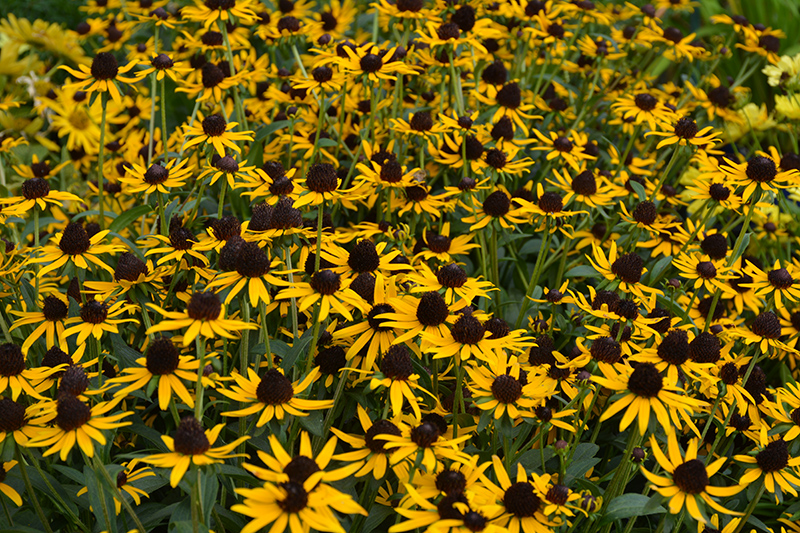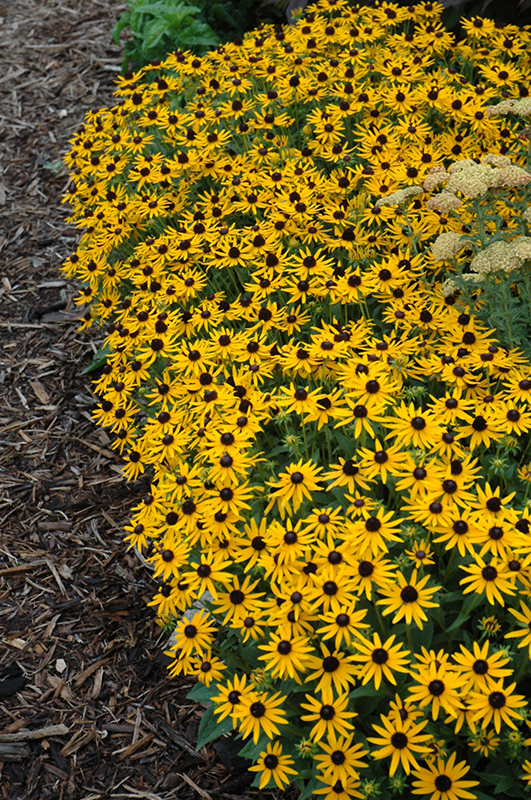Digging deeperPlant Library
Little Goldstar Coneflower
Rudbeckia fulgida 'Little Goldstar'
Height: 18 inches
Spacing: 14 inches
Sunlight:
![]()
Hardiness Zone: 4
Other Names: Orange Coneflower, Black Eyed Susan
Description:
A more compact and floriferous variety, ideal for small gardens; beautiful flowers of gold fill the plant through summer and early fall, a wonderful fall perennial
Ornamental Features
Little Goldstar Coneflower has masses of beautiful gold daisy flowers with dark brown eyes at the ends of the stems from mid summer to early fall, which are most effective when planted in groupings. The flowers are excellent for cutting. Its pointy leaves remain dark green in color throughout the season.
Landscape Attributes
Little Goldstar Coneflower is an herbaceous perennial with an upright spreading habit of growth. Its medium texture blends into the garden, but can always be balanced by a couple of finer or coarser plants for an effective composition.
This is a relatively low maintenance plant, and should be cut back in late fall in preparation for winter. It is a good choice for attracting butterflies to your yard, but is not particularly attractive to deer who tend to leave it alone in favor of tastier treats. It has no significant negative characteristics.
Little Goldstar Coneflower is recommended for the following landscape applications;
- Mass Planting
- General Garden Use
Planting & Growing
Little Goldstar Coneflower will grow to be about 14 inches tall at maturity, with a spread of 18 inches. When grown in masses or used as a bedding plant, individual plants should be spaced approximately 14 inches apart. It grows at a fast rate, and under ideal conditions can be expected to live for approximately 15 years. As an herbaceous perennial, this plant will usually die back to the crown each winter, and will regrow from the base each spring. Be careful not to disturb the crown in late winter when it may not be readily seen!
This plant should only be grown in full sunlight. It prefers to grow in average to moist conditions, and shouldn't be allowed to dry out. It is not particular as to soil type or pH. It is highly tolerant of urban pollution and will even thrive in inner city environments. This is a selection of a native North American species. It can be propagated by division; however, as a cultivated variety, be aware that it may be subject to certain restrictions or prohibitions on propagation.
A NetPS Plant Finder tool
This Plant Library is for informational purposes only. We may or may not carry the items listed. During many times of the year, we may carry many more plants in our store than are listed in the Plant Library. Please contact us directly at 303-690-4722 or visit our store for current availability and for assistance.


